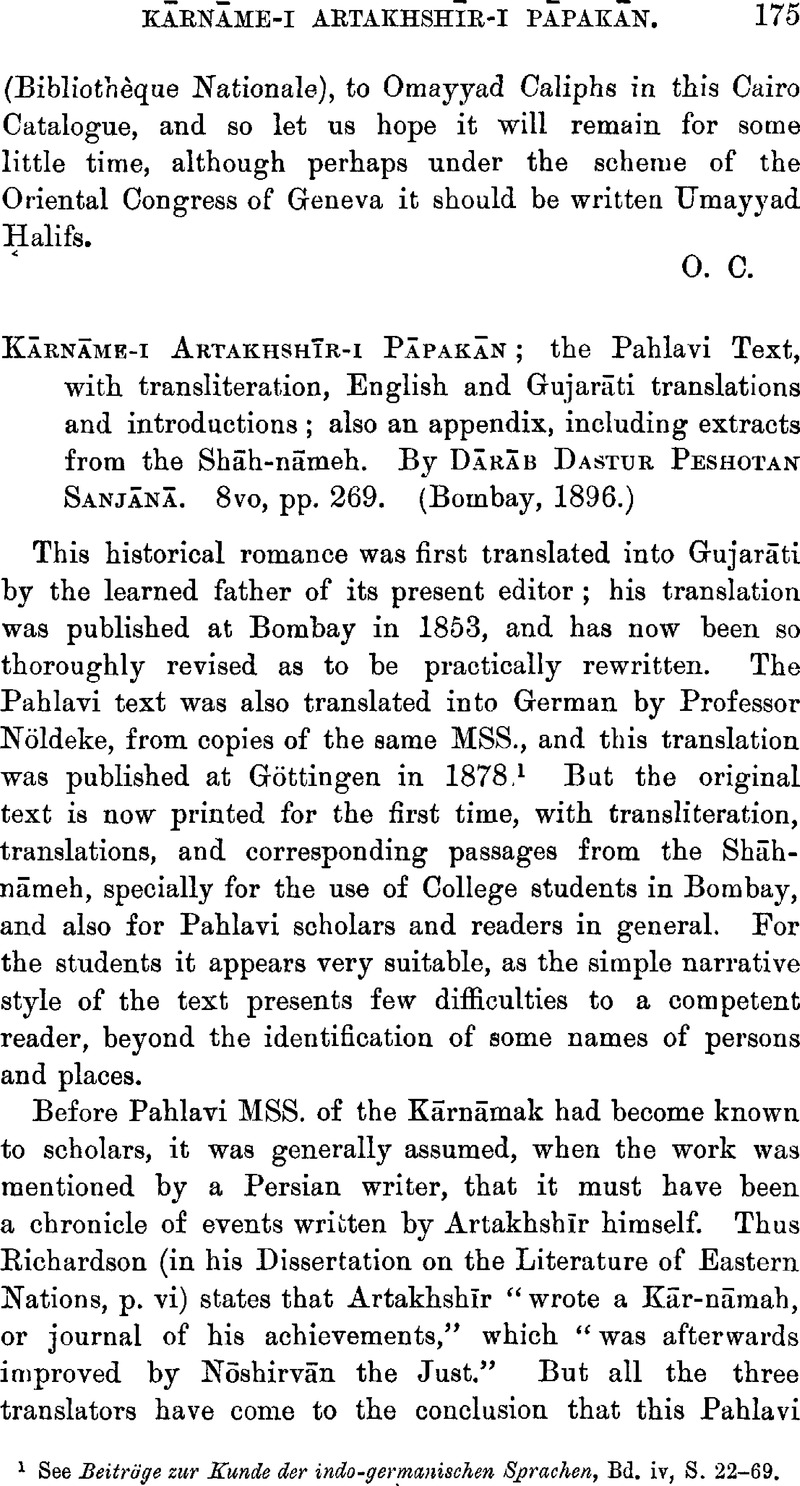No CrossRef data available.
Article contents
Kārnāme-i Artakhshīr-i Pāpakān; the Pahlavi Text, with transliteration, English and Gujarāti translations and introductions; also an appendix, including extracts from the Shāh-nāmeh. By Dārāb Dastur Peshotan Sanjānā. 8vo, pp. 269. (Bombay, 1896.)
Published online by Cambridge University Press: 15 March 2011
Abstract

- Type
- Notices of Books
- Information
- Copyright
- Copyright © The Royal Asiatic Society 1898
References
page 175 note 1 See Beiträge zur Kunde der indo-germanischen Sprachen, Bd. iv, S. 22–69.
page 179 note 1 Literally, “the horse-stable” (asp-akhvūr for asp-ākhūr). Ervad Tehmuras remarks that the Shāh still sends men to his stables to be punished.
page 181 note 1 See Nöldeke's, Gesehichte der Perser und Araber (from Tabari's chronicles), p. 45Google Scholar.
page 182 note 1 Probably Tenā, between Sũrat and Bharūc. It is called Ṭhāṇām-Velākula in the Sanskrit colophon of the codex, as copied in 1721.




